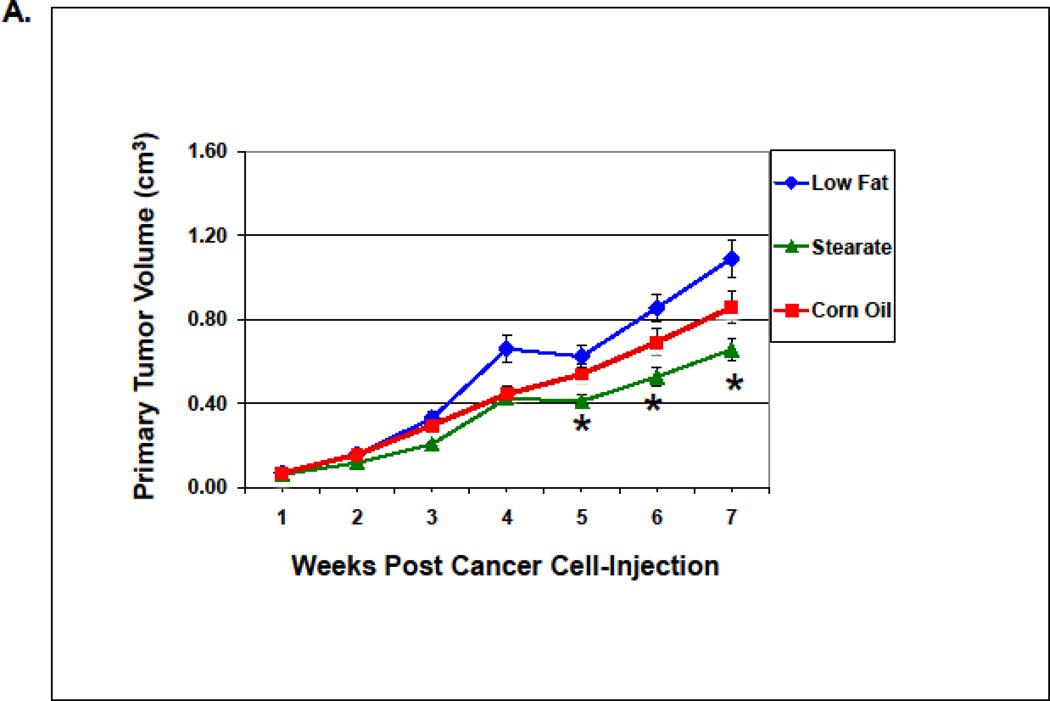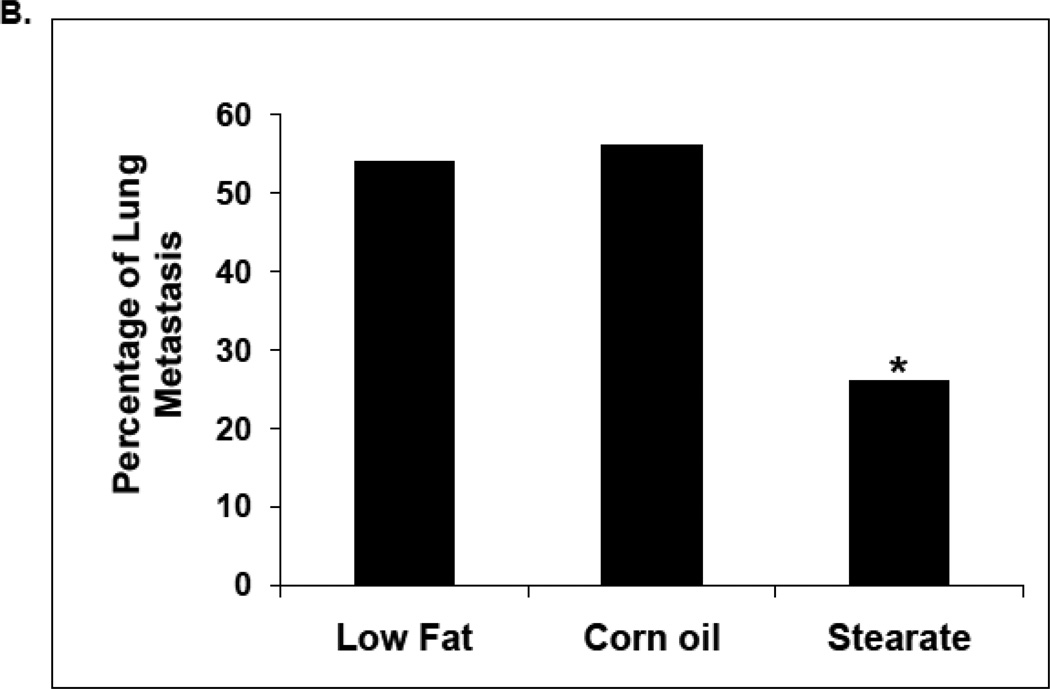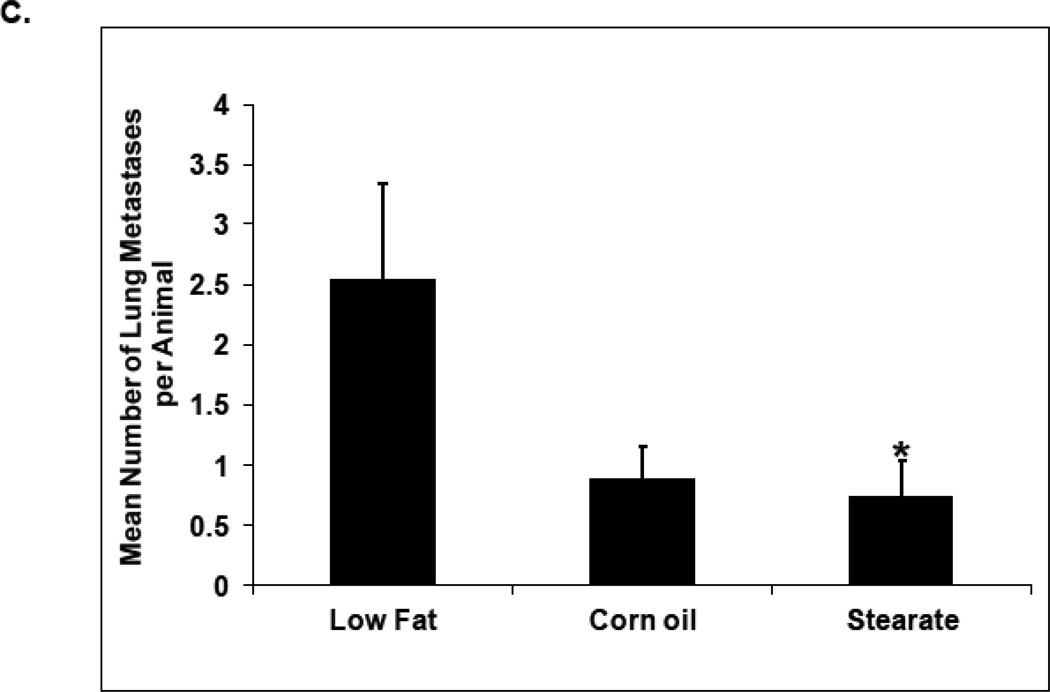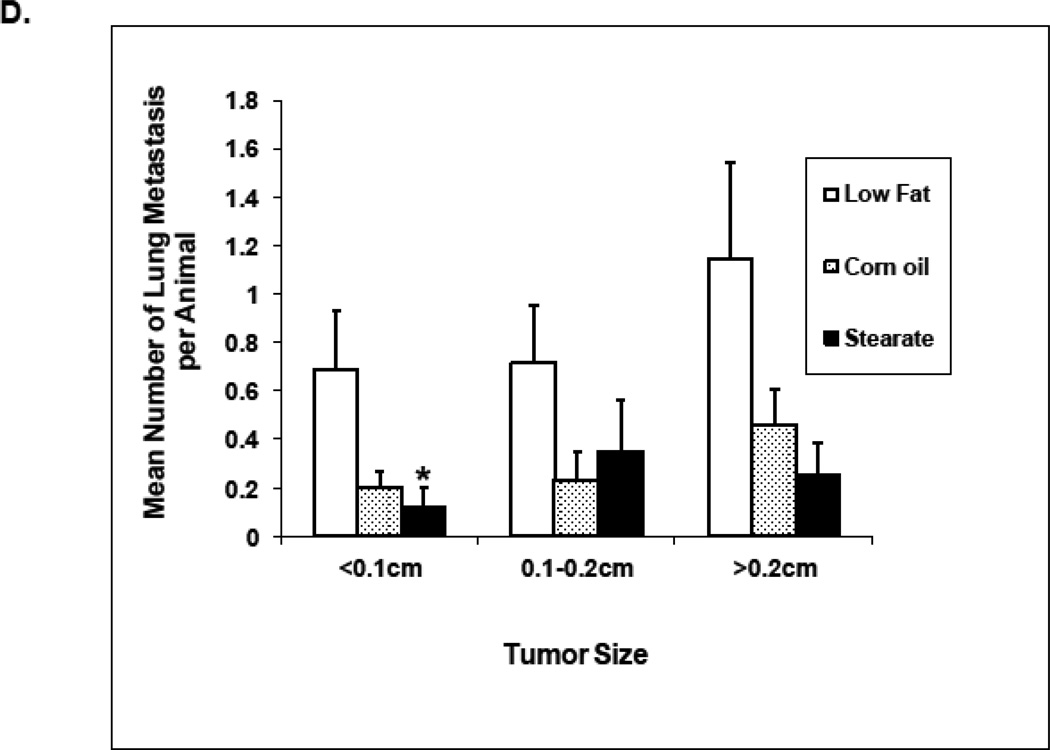Figure 3.
Effects of diets plus chemotherapy on lung metastasis incidence and tumor burden in the prevention study. (A) There was no difference in the time to development of measurable tumors between the diet groups. The ST diet mice had smaller primary tumors beginning at 5 weeks post injection compared to the LF diet mice and remained smaller until they were removed (n=25–30 animals per diet; *, p<0.05). (B) The number of mice with lung metastases was counted following necropsy, and the incidence of lung metastasis determined. Mice on the ST diet had a significantly decreased incidence of lung metastasis as compared to the LF or CO diet groups. (n=25–30 animals per diet; *, p<0.05). Percentages are compared to the LF control without chemotherapy (see Fig. 4B). (C) The number of lung metastatic tumors per animal was compared following necropsy. Mice from the ST diet group had a significantly decreased number of lung metastases compared to those from the LF diet group (n=25–30 animals per diet; *, p<0.01). Although mice on the CO diet had a lower number of metastases, significance was not reached. (D) The size of lung metastatic tumors was measured with a dissecting microscope and tumors were stratified into three groups based on size (diameter <0.1cm, small size; 0.1–0.2cm, medium size; >0.2cm, large size). Mice on the ST and CO diets had fewer tumors in each size group however the only significant difference was the ST diet had fewer small size lung metastasis compared to the LF group (n=25–30 animals per diet; *, p<0.01).




